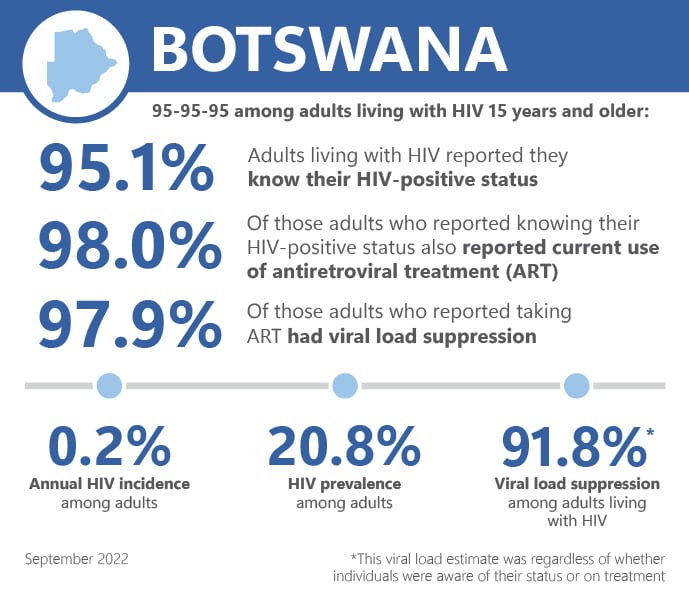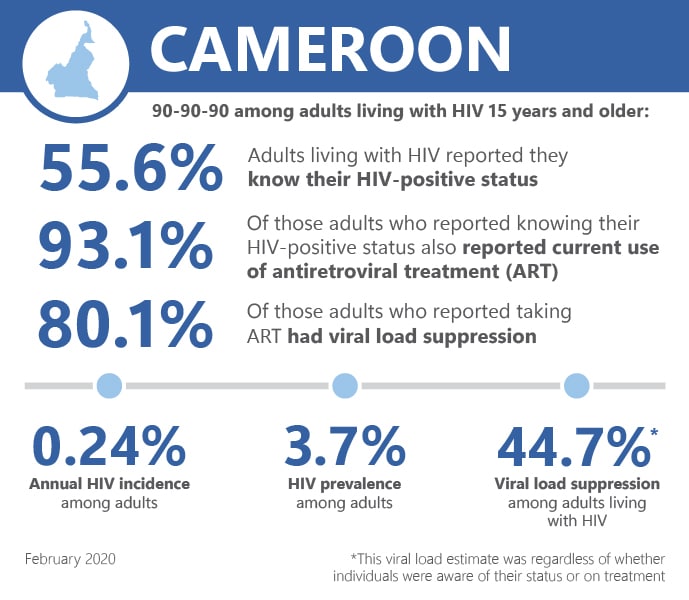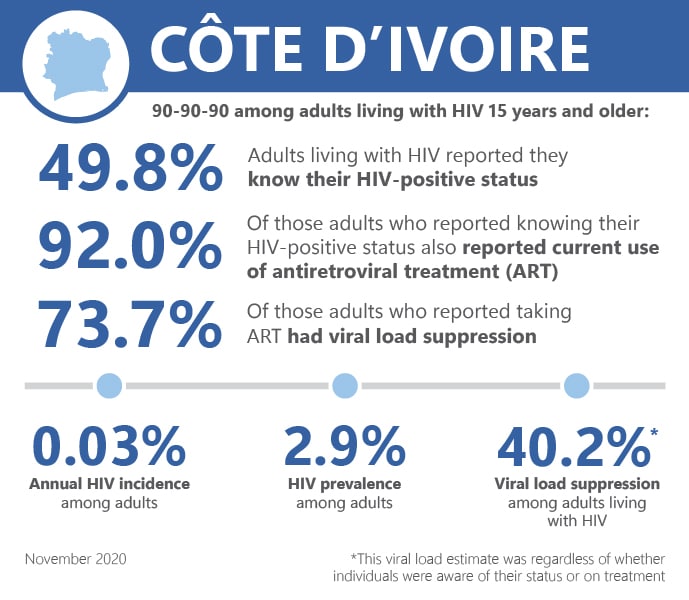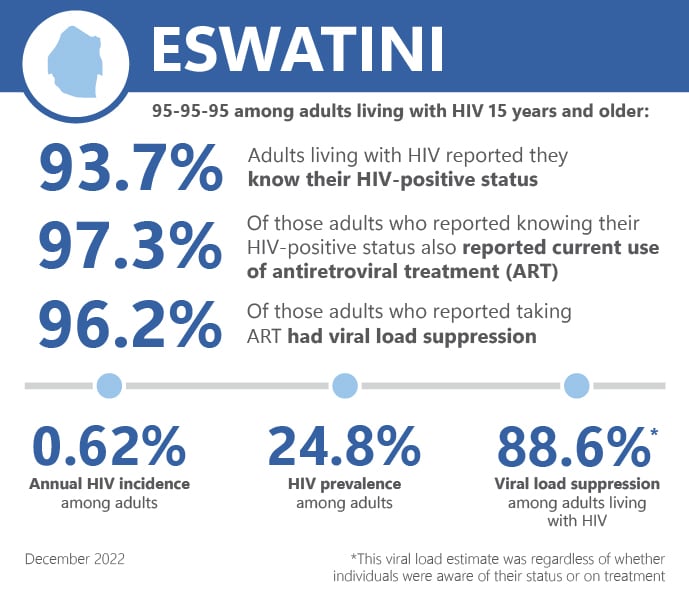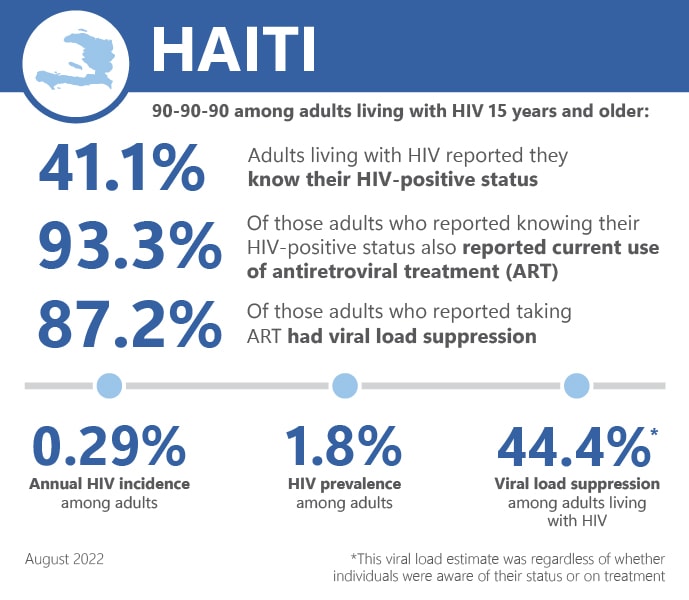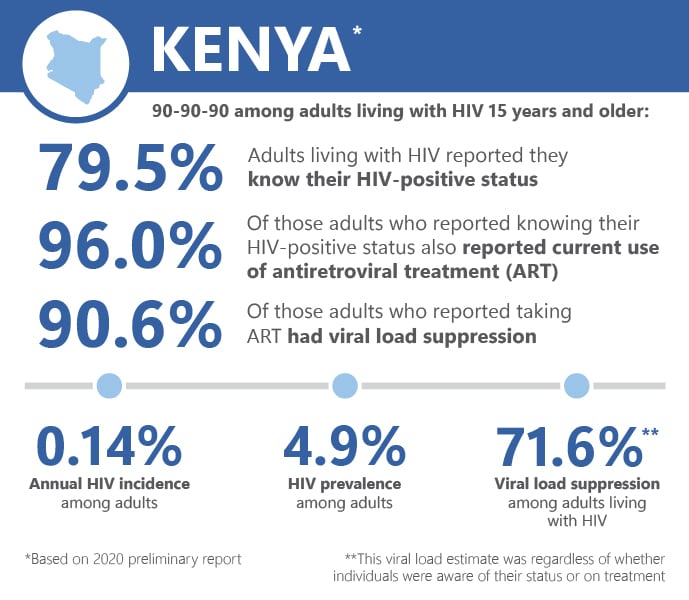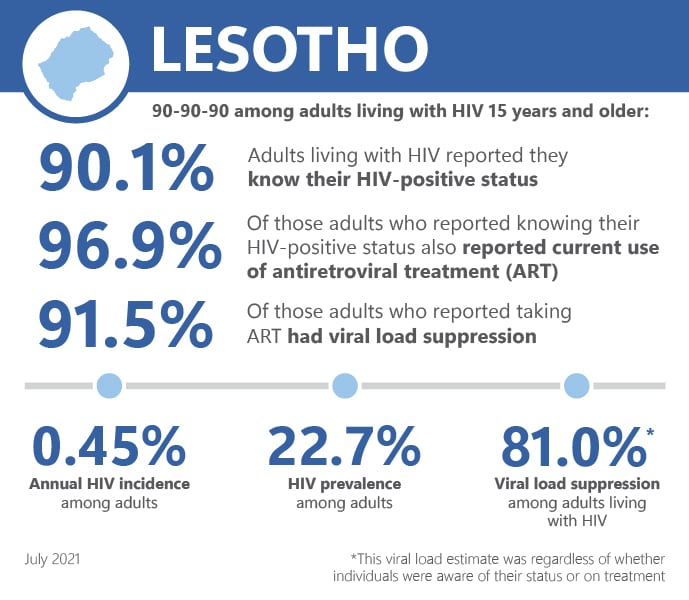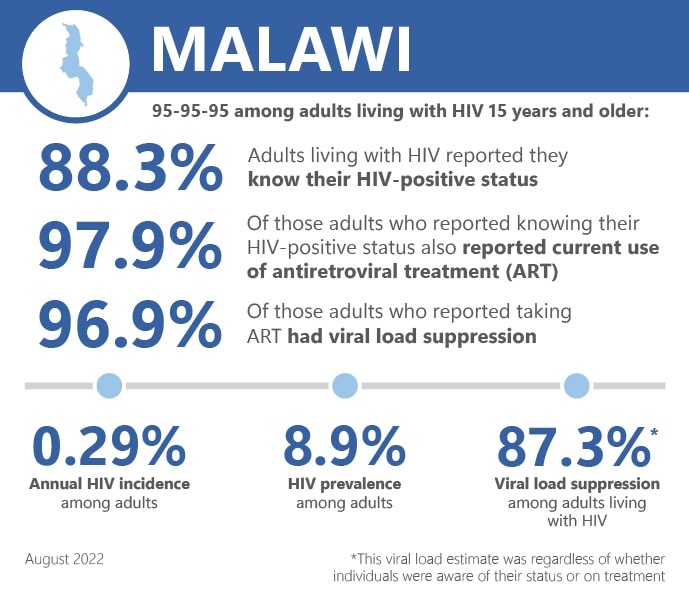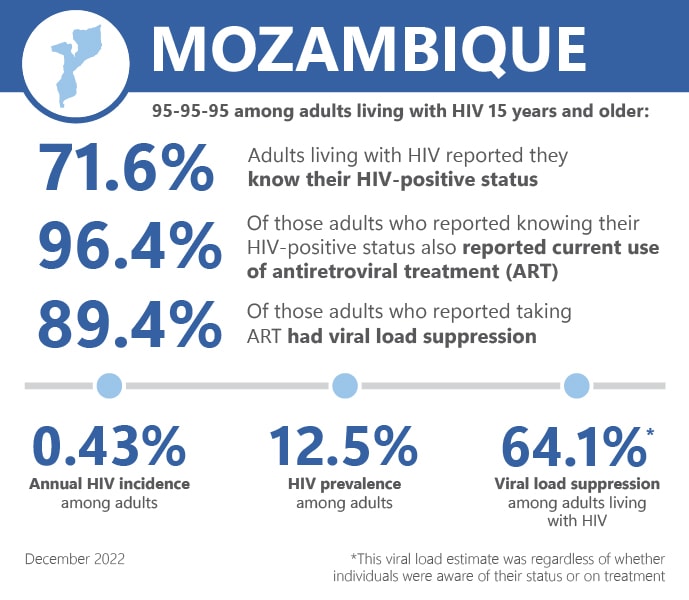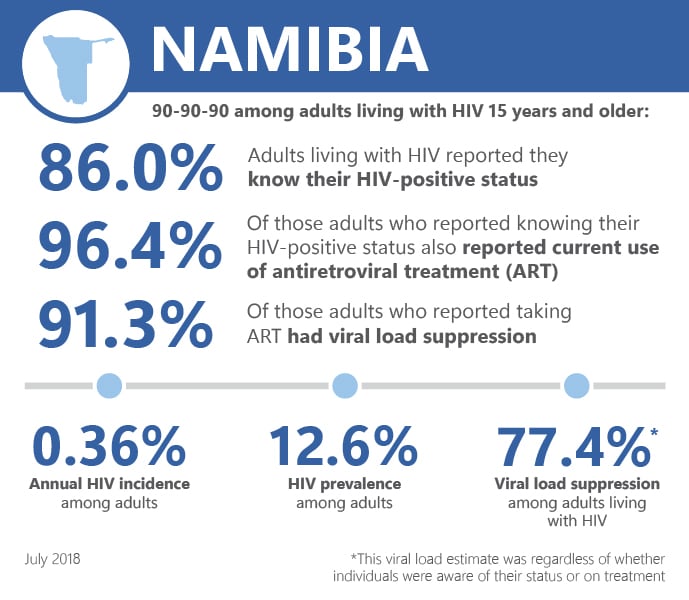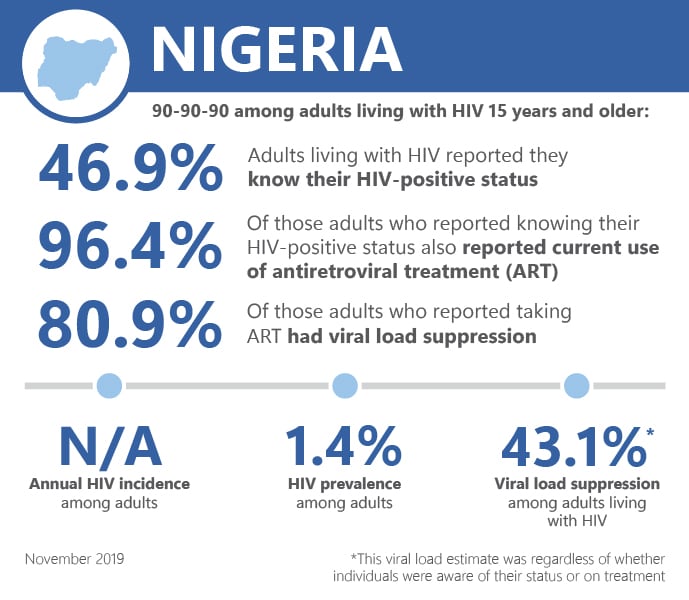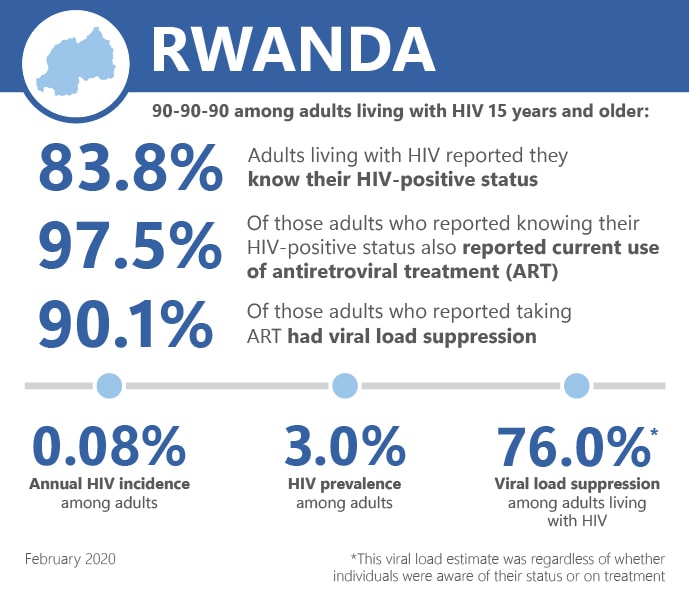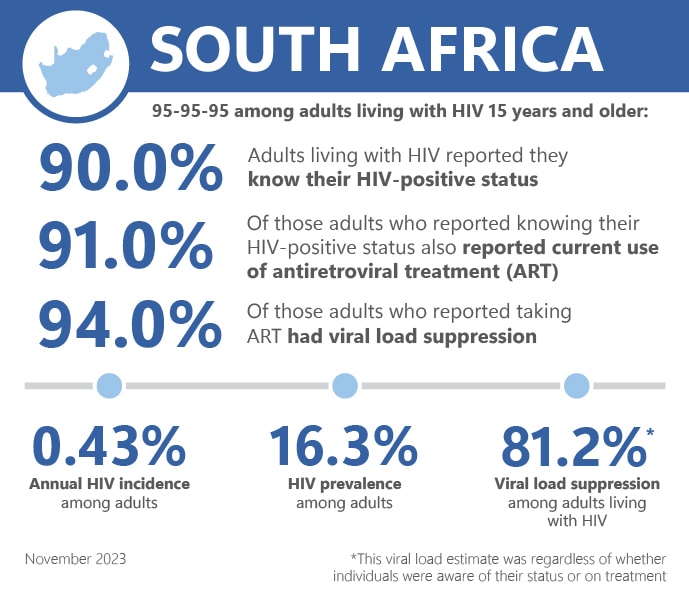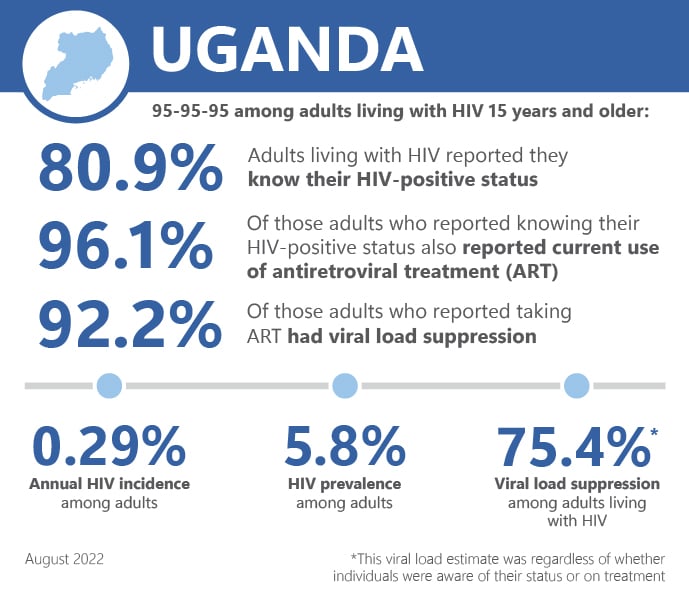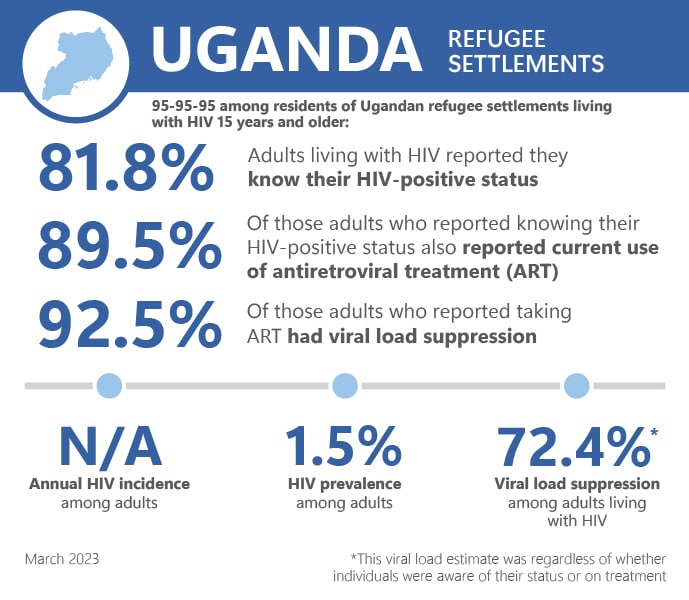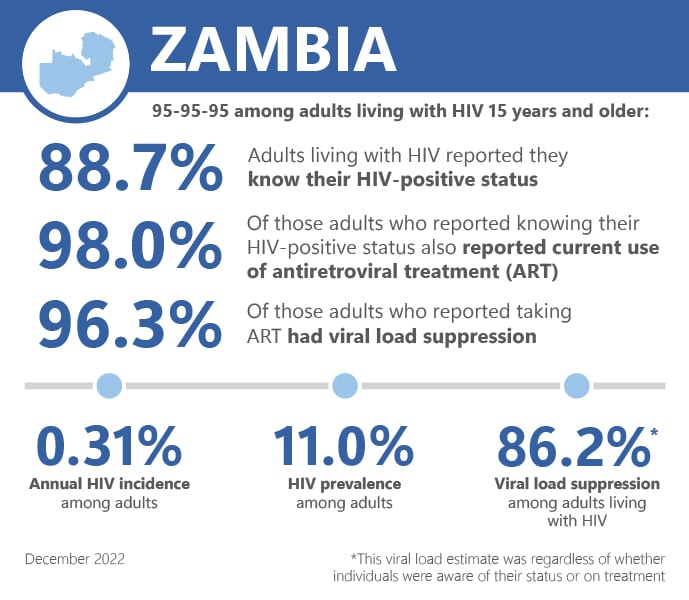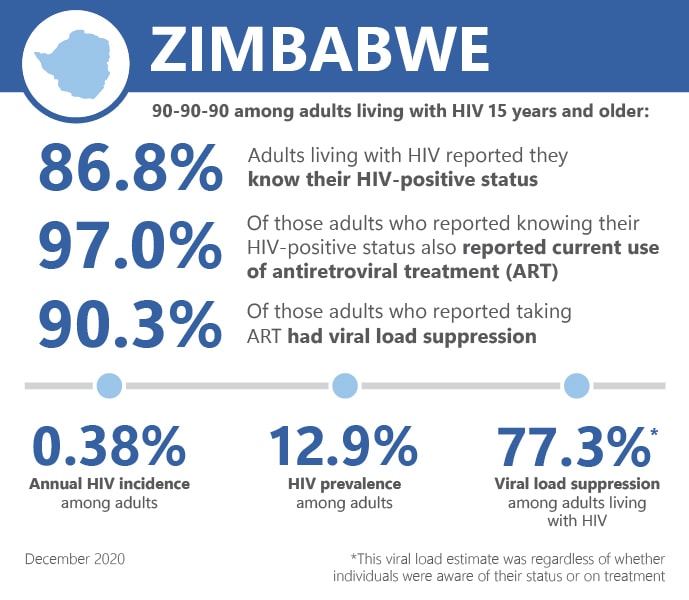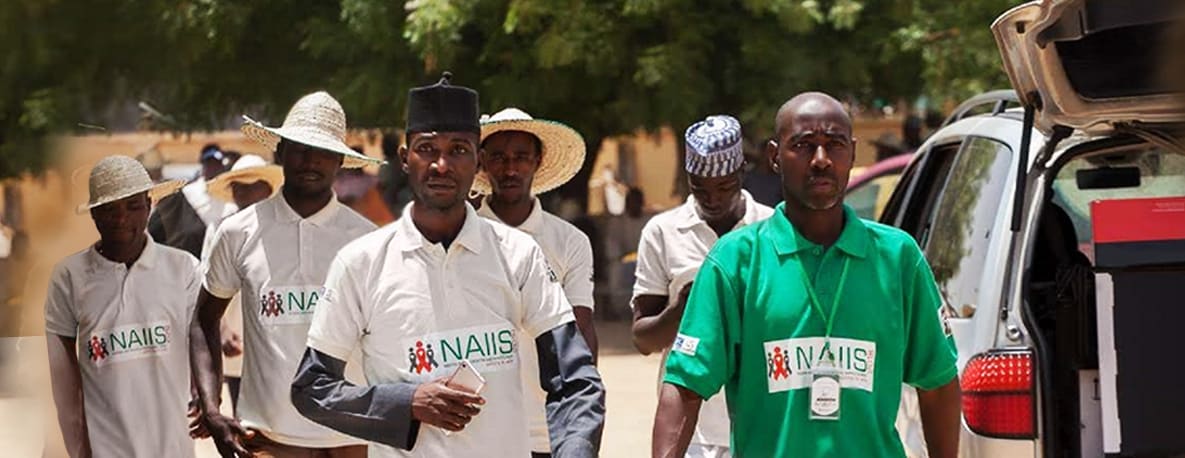Tracking PEPFAR Impact Toward Global Targets
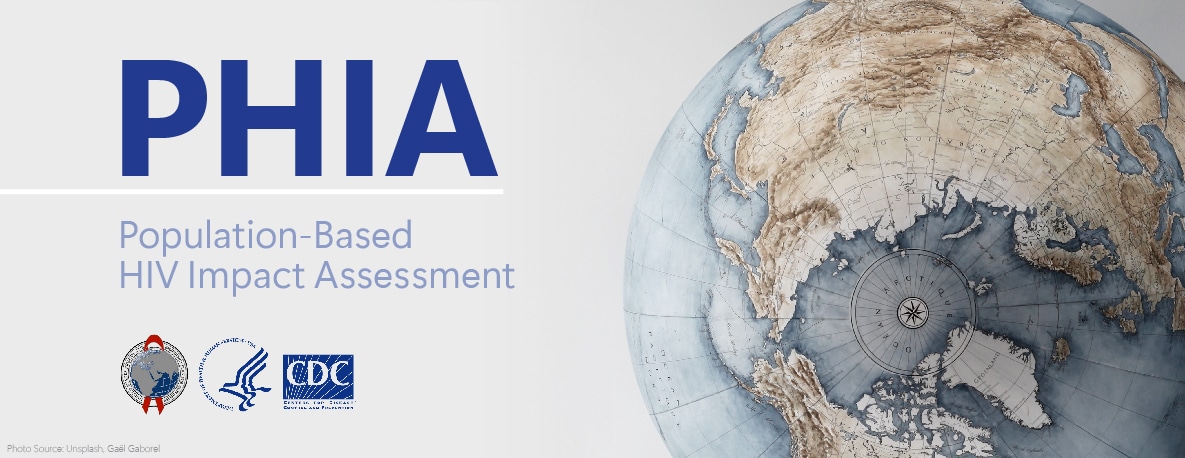
The U.S. Centers for Disease Control and Prevention (CDC) works with partners including host countries, local implementing partners, faith-based organizations, and other community-based organizations to measure progress towards HIV epidemic control in countries supported by the U.S. President’s Emergency Plan for AIDS Relief (PEPFAR).
The Population-Based HIV Impact Assessments (PHIAs) surveys are an important tool for measuring the impact of HIV treatment and prevention programs in PEPFAR-supported countries. CDC and partners apply analytical insights from PHIAs to make timely adjustments to programs, leading to increased efficiencies and positive outcomes for community members, including people living with HIV.
CDC’s technical expertise and scientific leadership, as well as longstanding relationships with national and regional governments, implementing partners, and host communities, contribute to the success of the collection and analysis of survey data and the rapid implementation of insights towards continuous program improvement.
Where Have PHIAs Been Completed?
A map showing countries where PHIA surveys have been completed.
PHIA Survey Data Highlights
Data highlights from participating countries’ surveys showing progress toward UNAIDS targets and HIV incidence, prevalence, and viral load suppression. Prior to 2020, PHIAs tracked progress toward 90-90-90 targets – which reflect a snapshot of progress at the time of the survey. Subsequent surveys track progress toward more ambitious 95-95-95 targets.
PHIA In the News
Background Information
A data-informed decision making brief on PHIAs and PHIA Frequently Asked Questions.
PHIA Journal Supplement
PHIA journal supplement as part of the August 2021 edition of the Journal of Acquired Immune Deficiency Syndromes (JAIDS).
ICAP Resources
PHIA project data to guide the global response to the HIV epidemic.


















